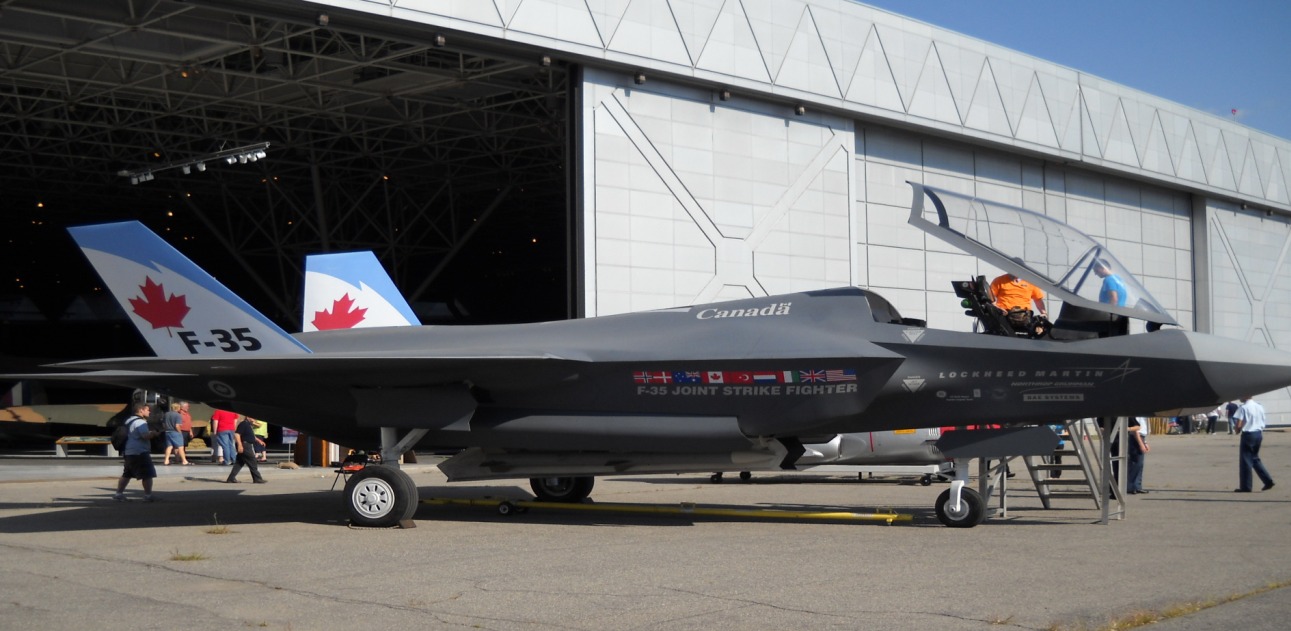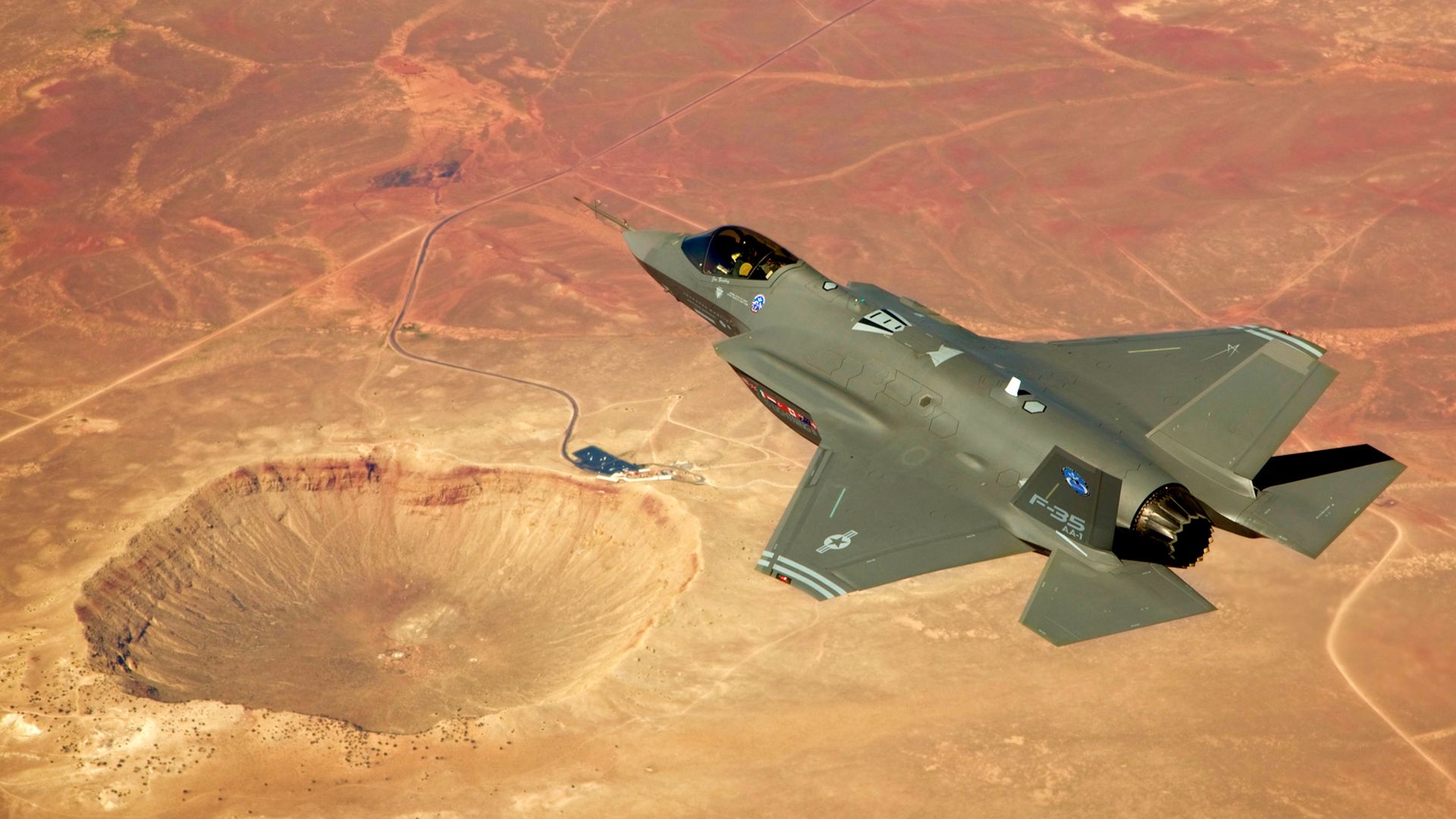A high-ranking official in Canada’s Department of National Defense has indicated that Canada is currently forging ahead with the F-35 program, even though the purchase has been put under review by Prime Minister Mark Carney amid heightened tensions with the United States.
In January 2023, the Canadian government inked a CAD19 billion (US$14.2 billion) deal with Lockheed Martin to acquire 88 F-35 fighter jets in four tranches by 2032. The purchase was meant to replace the aging CF-18s of the Royal Canadian Air Force (RCAF).
However, after taking office in March this year, Carney announced that his government would review the purchase of the F-35.
The decision was taken after the US President Donald Trump imposed unprecedented tariffs on Canada, offended its leadership, and called on the country to become the 51st state of the US. Additionally, there were doubts that in the event of a political fallout, the Trump administration could weaponize the control it enjoys over the aircraft by blocking access to spare parts and software upgrades.
With the results of the review still awaited, Canada’s Deputy Defense Minister Stefanie Beck said Canada is moving “full steam ahead” on the F-35 program.
She was testifying before the tri-party public accounts committee, which is reviewing the latest auditor general’s report on the high costs associated with the purchase of the stealth fighter, as reported by CBC.
The audit report published in June 2025 stated that the purchase of 88 F-35A fighters by Canada is facing challenges like skyrocketing costs, a lack of critical infrastructure, and a shortage of trained pilots.
It noted that the estimated cost of the F-35 program has climbed to CAD 27.7 billion, up from the CAD 19 billion projection made by the National Defense in 2023. This is almost 50% more than what was initially anticipated.
On the question of the F-35 procurement, Beck told the committee, “What we have as direction is to continue with the contract with the arrangements that we have in place until we hear otherwise.”
“We are full steam ahead, focused on making sure we’ve got the infrastructure, the pilots, the training in place for the arrival of those F-35s,” she added.
With four already paid for and eight with money down on the parts, Canada is committed to purchasing at least 16 F-35s. A US Air Force facility is anticipated to receive the first few jets next year, where pilot and technician training will be conducted. However, the future of the remaining fighters currently remains uncertain.

The comments come weeks after Canadian Defense Minister David McGuinty stated that the Liberal government will follow the military’s lead, which is speculated to favor the F-35 purchase, as noted in a previous Reuters report. The Canadian military leaders are very close to their US counterparts and have been pushing for more integration and co-operation between the two militaries, the report stated.
While Prime Minister Carney earlier expressed concern about being over-reliant on the US defense technology, the officials in his government believe that the Canadian military needs to maintain interoperability with the US.
“There’s a question of interoperability, there’s a question of interoperability in the United States, there’s a question of interoperability with all of our NATO allies.” “This is not inconsequential in decisions, in timing, in choices,” McGuinty said earlier this year.
These comments have given the impression that Canada will eventually go ahead with the acquisition of 88 F-35A, as originally intended. Moreover, any unfavorable decision by Canada on the F-35 deal can open a Pandora’s box and have a domino effect on USD 35 billion worth of defense deals that have been signed but not yet completed.
Notably, Canada’s secretary of state for defense procurement, Stephen Fuhr, said in an interview earlier this week that the nation wasn’t attempting to abandon the F-35.
“I don’t think that’s the direction we’re heading,” Fuhr said in an interview with CBC. “But there’ll be a decision, and we’ll make it when we’re ready.”
A spokesperson explained hours later that he was talking about the future of the 16 contracted jets, not the fleet as a whole.
The Canadian Prime Minister had earlier stated that he would look for alternatives to the F-35 in Europe. Currently, Europe does not have a fifth-generation fighter jet. Instead, it has three different 4.5th-gen fighters: the Rafale, Eurofighter Typhoon, and the Gripen-E/F.
However, with Canada supposedly buying 16 F-35 jets, it will be forced to operate a mixed fleet — a challenging and costly affair.
Interestingly, the new commander of the Royal Canadian Air Force, Lt.-Gen. Jamie Speiser-Blanchet was asked if she agreed with the idea of a mixed fighter fleet. However, she sidestepped the question by saying that the Royal Canadian Air Force (RCAF) would have to anyway oversee two fleets throughout the F-35’s introduction because the current CF-18s are anticipated to remain in service until the early 2030s.
However, Speiser-Blanchet acknowledged that running two different fleets would be more expensive and difficult. “It would duplicate a certain amount of infrastructure and training,” she said.
Speiser-Blanchet stated in her testimony that Canada’s enemies both use extremely sophisticated fifth-generation combatants, and the sooner the shift occurs, the better.
“Both China and Russia have fifth-generation fighter aircraft and fifth-generation missiles that can go at much greater speeds and with much more that are holding Western allies at risk at this moment in time,” she said.
While the final decision rests with the Carney government, the writing on the wall suggests that the F-35 purchase will remain on track.
Big Win For Lockheed Martin
Earlier this month, Lockheed was awarded a $12.5 billion contract modification for nearly 300 of the newest F-35 Joint Strike Fighters.
In a statement, the US Navy stated that the contract modification will finalize the procurement of the 148 F-35s from the 18th lot and add scope for the production and delivery of an additional 148 fighters in lot 19.
The announcement builds on an $11.8 billion contract announcement for lots 18 and 19 in December 2024, raising the sum to almost $24.3 billion. The December award included 48 F-35As for the Air Force, 16 F-35Bs and five F-35Cs for the Marine Corps, and 14 F-35Cs for the Navy. At the time, the JPO stated that due to a shortage of funds, it intended to complete Lot 18 first before Lot 19.
“The F-35 Lot 18-19 contract represents continued confidence in the most affordable and capable fighter aircraft in production today,” Chauncey McIntosh, Lockheed’s vice president and general manager of the F-35 program, said in a statement. “We are proud to support our customers and further solidify the F-35’s role in enabling peace through strength.”

Lockheed and the Pentagon finally finalized the contract after two years of negotiations. The deal includes jets for the US government and foreign buyers, with deliveries expected to begin in 2026.
Notably, the DoD further stated that the contract is administered on cost-plus-fixed-fee, firm-fixed-price, and fixed-price incentive terms.
The development comes months after Lockheed said it was expecting to secure a finalized contract for its F-35 fighter jets sooner than previously projected.
“The fighter jets in lot 19 could potentially be awarded sooner than the second half of this year, which was the company’s earlier timeline,” said Evan Scott, the Chief Financial Officer of Lockheed Martin.
The F-35 contract had previously been beset by delays related to the TR3 technology upgrades, impacting deliveries since summer 2023 due to software and integration issues.
The contractor delivered approximately 110 F-35 fighter jets to the US and its allies in 2024 and has been hopeful of receiving more promising orders.
The Pentagon also announced a $101 million cost-plus-fixed-fee arrangement to buy F-35 parts ahead of time, as there may be shortages or reduced manufacturing sources.
Additionally, a $137 million agreement with Lockheed has been allocated to reverse deteriorating manufacturing sources and engineer changes to F-35 lot 17. An $11.6 million contract has been awarded to redesign a sensor circuit card assembly by July 2027.
- Contact the author at sakshi.tiwari13 (at) outlook.com
- Follow EurAsian Times on Google News




